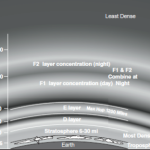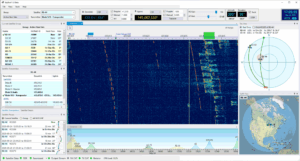SARTrack Software Review: A Powerful APRS Tool for Search and RescueSARTrack is a specialized software designed for Search and Rescue (SAR) operations and APRS (Automatic Packet Reporting System) tracking, developed by SARTrack Limited. Aimed at both amateur radio enthusiasts and professional SAR teams, it stands out for its robust feature set and ability to operate in challenging environments. Below, I’ll explore its key features, strengths, weaknesses, and why it’s a go-to tool for serious APRS users, drawing from available information and user experiences.OverviewSARTrack is a live tracking system built on the APRS protocol, primarily for SAR operations in areas with no internet or phone coverage. It displays team positions on topographic maps, supports messaging, and includes SAR logging capabilities. Compatible with Windows (XP through 10), it’s highly customizable and integrates with off-the-shelf APRS trackers and radios, making it versatile for both amateur and professional use.Key Features
Real-Time Tracking: SARTrack excels at plotting team locations on detailed topographic maps (e.g., New Zealand NZMG projection or OpenStreetMap). It supports tactical call signs and multi-colored tracks for easy identification.Messaging System: A built-in messaging interface allows users to send and receive APRS messages, resembling a simple email or chat system. This works even without internet, as demonstrated in tests with a Kenwood TH-D72A radio.SAR Management Tools: Beyond APRS, SARTrack offers logging, incident management, and resource tracking, making it popular for land-based SAR operations in New Zealand.Flexible Map Support: Users can add custom maps or use OpenStreetMap, with scalable maps down to 60 meters for precise tracking.Hardware Compatibility: It supports a wide range of TNCs (Terminal Node Controllers) and radios, including older models like the PK232 Packratt, with simple configuration.Offline and Online Modes: Designed for offline use in remote areas, it can also act as an internet gateway when connected, enabling global coordination.Ease of Setup: Users praise its straightforward configuration, requiring only basic details like callsign and email for a unique passcode to enable email-to-APRS functionality.Strengths
User-Friendly for Serious Users: While not as simple as casual APRS tools like PinPoint, SARTrack’s interface is intuitive for those needing advanced features. Its comprehensive help manual aids learning.Robust Offline Capability: The ability to function without internet or cell service makes it invaluable for remote SAR missions, such as the Southern SAREX 2016 on Stewart Island.Versatility: From ham radio hobbyists to professional SAR teams, SARTrack’s flexibility suits diverse use cases, including emergency communications and high-altitude balloon tracking.Community-Driven Development: Developed by Bart Kindt, SARTrack is actively maintained, with regular updates adding features based on user needs.Freeware Option: While premium versions exist (e.g., $299 for version 1.2), free versions are available, making it accessible for hobbyists.Weaknesses
Learning Curve: Compared to simpler APRS clients like PinPoint, SARTrack’s extensive features can overwhelm beginners. The help manual is detailed but requires time to master.Map Dependency: Maps aren’t included by default, requiring users to source OpenStreetMap or custom maps, which can be a hassle for new users.Windows-Only: SARTrack is limited to Windows, which may exclude users on macOS or Linux who prefer cross-platform tools like Xastir.Limited Reviews: There’s a lack of widespread user reviews, making it harder to gauge long-term reliability or performance across diverse setups.Why SARTrack Shines in the APRS WorldSARTrack’s strength lies in its niche focus on SAR and emergency management, setting it apart from general-purpose APRS clients. Its ability to operate offline aligns perfectly with APRS’s core strength: reliable communication in areas where smartphones fail. For example, during a 2016 SAR exercise in New Zealand, SARTrack was instrumental in coordinating teams, proving its real-world value. Its messaging system, tested successfully in urban settings without internet, adds a practical layer for both SAR and ham radio use.
Compared to alternatives like PinPoint, SARTrack is less beginner-friendly but far more powerful for complex operations. Its compatibility with various hardware and dynamic map scaling (down to 60 meters) makes it a favorite for professionals and enthusiasts alike.
ConclusionSARTrack is a powerhouse for APRS-based tracking and SAR operations, blending user-friendly setup with advanced features like real-time mapping, messaging, and incident logging. While it has a steeper learning curve than simpler tools, its offline capabilities and hardware flexibility make it indispensable for serious users, from ham radio operators to SAR teams. If you’re diving into APRS for emergency communications or complex tracking, SARTrack is a top-tier choice. Download it from
sartrack.co.nz and explore its potential—just be ready to spend some time mastering its depth
 Rating
Rating: 4.5/5 – A must-have for SAR and APRS pros, but beginners may need patience to unlock its full potential.










